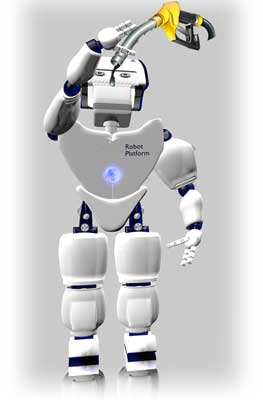Energy for Robots
 Energy as mentioned before is the ability to do work. For robots energy is required to rotate wheels, raise an arm, lift an object etc. This energy is broadly classified as primary energy and secondary energy. Primary energy is energy form found in nature which is not subjected to any conversion process, generated through natural resources like sunlight, oil, natural gas, wind and hydropower. Secondary energy like electricity, petrol is in more usable form which is converted and processed from primary energy. Primary energy is again categorized as renewable and non-renewable energy. Renewable energy sources are wind, sunlight, rain, geothermal heat, wave and hydro power. Non-renewable energy includes fossil fuels like coal, oil and natural gas, nuclear power generated by materials such as uranium ore etc.
Energy as mentioned before is the ability to do work. For robots energy is required to rotate wheels, raise an arm, lift an object etc. This energy is broadly classified as primary energy and secondary energy. Primary energy is energy form found in nature which is not subjected to any conversion process, generated through natural resources like sunlight, oil, natural gas, wind and hydropower. Secondary energy like electricity, petrol is in more usable form which is converted and processed from primary energy. Primary energy is again categorized as renewable and non-renewable energy. Renewable energy sources are wind, sunlight, rain, geothermal heat, wave and hydro power. Non-renewable energy includes fossil fuels like coal, oil and natural gas, nuclear power generated by materials such as uranium ore etc.
When we talk about robots, it is common to ignore the energy source which powers the robot. This is because most robots are battery (electricity) powered. But there are various other sources of energy which are generally overlooked. Battery in itself has a wide range of choices. In the next few sections we will understand different energy sources available for robots. Choice of energy source again depends on what the robot is expected to do, size of robots, how long the robot should stay active, and its environmental conditions.
Do you have anything to say?
Visit the Forum to discuss, learn and share anything related to robotics and electronics !!








